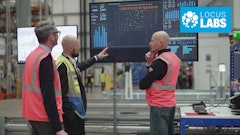
CBAM is a new tax on certain carbon-intensive imported goods designed to level the playing field between EU and non-EU manufacturers regarding the cost of carbon. CBAM aims to prevent “carbon leakage” — when manufacturers move production to countries with looser environmental policies to sidestep the EU’s strict climate policies — by starting to tax those goods in line with the price that the EU would have been paid under the Emissions Trading System (ETS).
Companies importing goods into the EU must report on the embedded emissions of in-scope goods and purchase CBAM certificates (starting in 2026) to balance the cost difference. As of July 31, 2024, CBAM required EU importers to use primary data directly from manufacturing installations when calculating and reporting embedded emissions rather than relying exclusively on other estimation methods. While carbon taxes aren’t new, this specific requirement sets a precedent for supply chain transparency.
Deeper, More Granular Data Requirements
Importers and upstream suppliers have never been expected to disclose emissions data this deep and with this much granularity.
When it comes to carbon footprint accounting, businesses commonly report on scope one and two emissions (carbon emissions directly attributed to one’s own activities and transportation). Scope three emissions, broadly defined by the U.S. Environmental Protection Agency as “the result of activities from assets not owned or controlled by the reporting organization, but that the organization indirectly affects in its value chain,” but also known as “everything else,” have historically been considered too complex and broad to report with any accuracy, until now.
CBAM presents the first time that in-scope importers are asked not only to report on scope three emissions, but to do it with real-world primary data sourced directly from the manufacturer. Because of the complexity of global supply chains, the actual manufacturing location for the goods in scope may be one or more tiers removed from the importer, necessitating multi-tier supply chain engagement. Those suppliers may not be in scope themselves, requiring importers to exert their influence across the supply chain to create communication and carbon transparency.
Compliance with CBAM boils down to entire global supply chains working together to collect and share the deepest levels of emissions data. And for non-EU suppliers to do it without the risk of non-compliance fines to motivate them. It’s a complex global experiment pushing the boundaries of supply chain collaboration.
Carbon Data Is as Good as Gold
So, what IS the driving force behind CBAM compliance?
Money. Carbon has a cost, and under CBAM, carbon data has a literal monetary value. Whether importers reduce expenses or suppliers protect their market share, the European Commission is counting on financial incentives to drive transparency demands upstream.
Without primary data, importers must rely on default estimates for worst-case scenarios when buying CBAM certificates. This means they’re paying a premium on carbon that they’re not even using. Plus, failing to use primary data may result in non-compliance fines. Many EU manufacturers are expected to work to mitigate their overall exposure to financial risk associated with CBAM, especially ahead of the permanent system going into effect in 2026.
Suppliers’ bottom lines are at stake too. While upstream suppliers aren’t the ones in scope of CBAM, and there’s no legal obligation for them to provide primary data, CBAM does create a market access issue with financial repercussions. Providing primary embedded emissions data is the only way to minimize the financial impact of CBAM on EU customers and help reduce the risk of losing business to resourcing (either to suppliers within the EU or suppliers who are able to provide primary data).
To maintain a competitive advantage, suppliers will need to establish internal protocols to capture and disclose primary carbon emissions data, including engaging their supply chains and conducting complex scope three emission calculations. Properly establishing a comprehensive carbon footprint program can take years, and now upstream manufacturers have only months to do it. Plus, it’s complicated, time-consuming, and costly.
The Writing Is on the Wall
Over the next year, the industry will see how well EU importers and their global suppliers adapt to the new primary data requirement under CBAM. It’s also yet to be seen how strictly the European Commission will enforce it through fines, or if there will be a leniency period while supply chains gather better data.
However, what is clear now is that carbon matters, as a cost of doing business. CBAM is just the beginning; many countries are currently considering or rolling out their own iterations, including the UK, Japan, Singapore, South Korea, Canada and the U.S. (currently, the state of California has a carbon border adjustment mechanism in place). Not to mention other emerging and existing regulatory and market drivers for product carbon footprinting, such as the Ecodesign for Sustainable Products Regulation (ESPR).
As more CBAM-style trade regulations emerge, the regulatory landscape will be formed less by national boundaries and more by supply chain sustainability and financial performance. These new carbon reporting obligations create opportunity: access to accurate and deep supply chain sustainability data now directly connects to the corporate bottom line. It provides a competitive advantage and revenue protection in a global market that is increasingly hinging market access and taxation on product sustainability. Manufacturers in carbon-intensive sectors need a proactive approach to communicating supply chain data downstream to their customers to remain competitive as regulations become increasingly sustainability-focused.




















